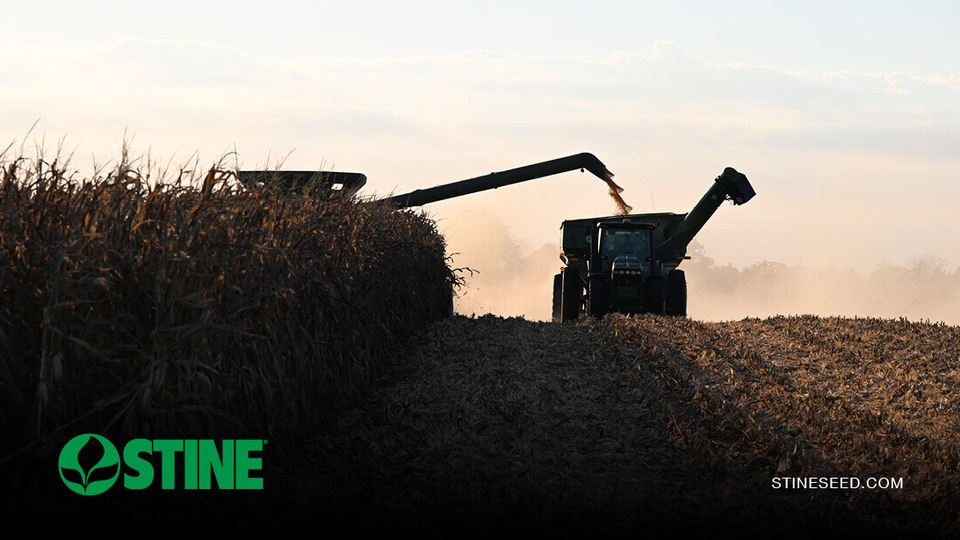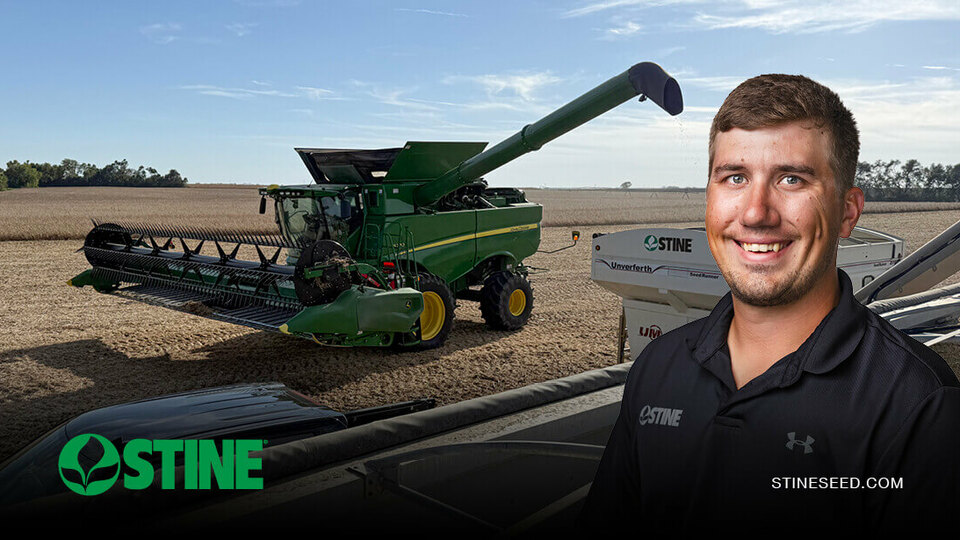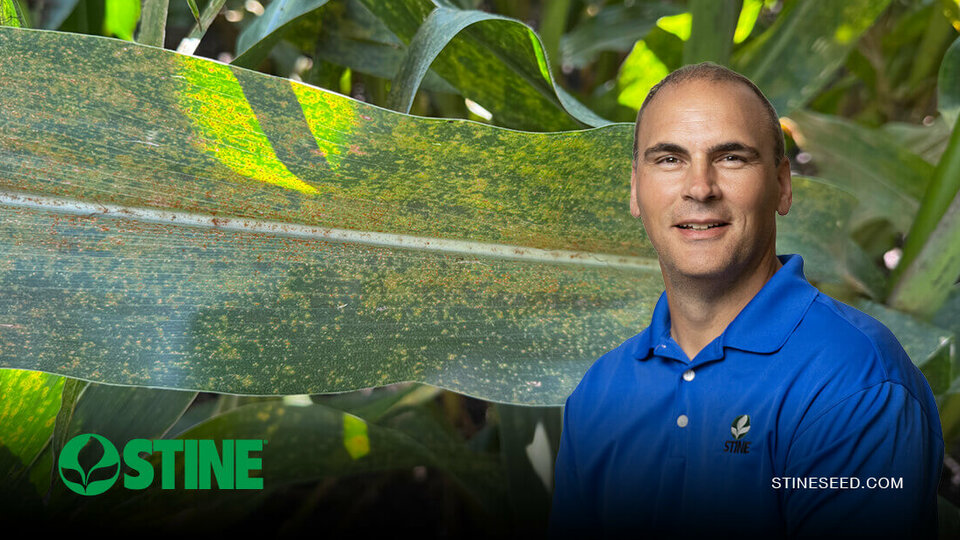As we move into the heart of the growing season, it’s not just the heat that intensifies; the threats do, too. June and July often mark the onset of critical disease pressure in both corn and soybeans. Staying ahead of those threats is essential to protecting yield potential.

“The hard work doesn’t stop once growing season is underway,” says Tom Larson, director of agronomy for Stine® Seed Company. “Identifying and mitigating midseason threats, such as yield-robbing diseases, is especially important as we near the critical pollination stage for crops.”
At Stine, we believe the best disease strategy is a proactive one. It’s built on knowledge, preparation, and early-season decisions that pay off midseason and beyond.
Know the warning signs
Many of the most yield-limiting corn and soybean diseases are gray leaf spot, tar spot, northern corn leaf blight, sudden death syndrome and white mold. These become increasingly visible in July or mid-growing season, but by the time they’re easy to spot, they may have already taken a toll on your crop’s performance.
Scouting regularly is key. In corn, look for long, rectangular lesions (gray leaf spot) or cigar-shaped lesions (northern corn leaf blight) on lower leaves that can work their way up the canopy. In soybeans, watch for interveinal chlorosis, necrosis or defoliation — especially in areas prone to compaction or stress.
Common Corn and Soybean Diseases
To learn more about identifying common diseases, refer to this Stine blog series:
It starts with seed
While most disease conversations occur midseason, effective prevention should begin before seed ever hits the ground. Seed treatments are one of the first lines of defense against early-season pathogens like Pythium, Phytophthora and Fusarium.
Choosing a quality seed treatment in fields with a history of disease pressure or unpredictable weather is critical to promoting early root development and minimizing stand loss. Seed treatments provide protection during vulnerable early stages of growth, giving your crop the best chance to thrive long after planting.
Fungicide timing matters
Applying fungicide at the right time can make a big difference in protecting your yield. For soybeans, that sweet spot is typically between early bloom and early pod development. In corn, the best results usually come from applying just before or at tasseling.
This timing helps you stay ahead of common diseases like gray leaf spot, tar spot and white mold — especially when conditions are warm and wet. While not every acre needs fungicide, it can be a smart investment in high-pressure fields or when aiming for top-end yield.
Proactive management, proven results
Strong genetics, smart scouting and timely fungicide applications work best when layered together. Stine helps growers put those layers in place! We know that our early-season seed protection, high-performing hybrids and trait platforms stand up to disease throughout the season.
“Our agronomists are available to help you track emerging threats and respond with agronomic strategies that match your unique field conditions. Staying ahead of crop diseases isn’t just good practice. It’s key to protecting the full potential of your yield.”
Tom Larson, Stine director of agronomy
Visit StineSeed.com or connect with your local Stine representative for tailored strategies to monitor, prevent and manage disease pressure this growing season. And don’t miss our “Stine Seedcast” episodes for timely tips and agronomic guidance all year long.
Related Articles
-

Stine harvest roundup: Part 2
October 2025 in Agronomy
-

Stine harvest roundup: Part 1
October 2025 in Agronomy
-

Proven performance in the field: Strong soybean yields across Nebraska
October 2025 in Agronomy
-

What to know about southern rust in corn
October 2025 in Agronomy



